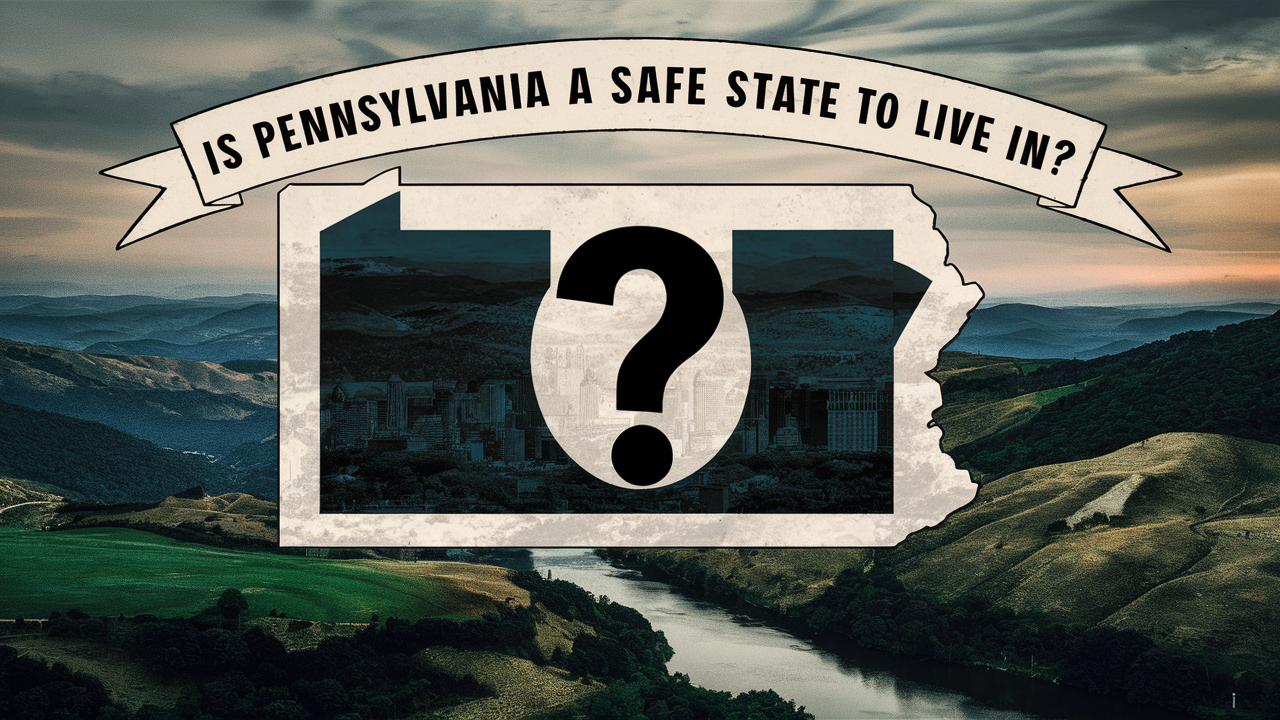Pennsylvania is one of the Northeastern states in the United States of America, having a population of slightly over 12 million people. This is one of the most historic states in the country, but how secure is it for individuals dwelling in the state? By breaking down the safety in Pennsylvania into multiple categories.
Crime Rates
A critical approach to understanding a state’s relative safety is by examining the crime rates. The most recent FBI Uniform Crime Report Statistics reveal that Pennsylvania possesses a below-average violent and property crime rate to the average of other states. The violent crime rate in 2020 was 306 offenses per 100000 residents, which was significantly lower than the national trend of 368.6 violent crimes per 100000 population. It also has comparatively low murder, assault, and robbery rates the state has several favorable indicators.
Additional crimes are property crimes and they are more common but the rate is still low compared to other parts of the nation. The state records approximately 1,866 property crimes per 100,000 of the population, although the average is higher in the United States at 2,200. These crimes include burglary, larceny-theft, and motor vehicle theft, all of which have decreased in occurrence in recent years.
Economic Safety
Concerning economic security, the state offers fairly reasonable economic safety as compared with other states. Some of the factors include; low unemployment rate, average income as well as affordable prices of housing and this makes financial security for many residents slightly easier. The employment situation remains relatively tight across the state, with the overall unemployment rate standing at a paltry 3.6% as of December 2022. Incidentally, the income level tends to reflect or at least closely resemble the national averages. In terms of median household income in 2021, it is ranked 23rd in Pennsylvania with $62,000.
The affordability of housing is significantly higher than in most of the Northeast region, although this is true in most small metropolitan regions across the state. However, living expenses in such cities as Philadelphia are slightly higher than the national average with the costs of housing being steep. Taking all of these variables into consideration, it appears that most of the regions in Pennsylvania can be considered financially sustainable due to a healthy job market and affordable living as compared to the biggest cities.
Natural Disasters
Another area of concern when evaluating the safety of a state is threats arising from severe climate and acts of God. Hurricanes do not affect Pennsylvania because of the state’s interior location: the state has been through zero direct hits. The state itself faces far lower earthquake risks than the regions of the west coast as well.
Yet, some years experience problems with flooding and winter storms. On some rare occasions, floods from melting snow and spring rains are experienced. However, FEMA disaster declarations for the state are rare, and less frequent than for say the Gulf Coast region that gets hurricanes annually. Tornadoes are also rare and occur at below-average rates We also know that tornadoes are a part of these, but they happen at below-average rates. In sum, Pennsylvania as a part of a moderate climate region has fewer risks of unexpected natural disasters, therefore, it is safe to live in a majority of regions of the state except for flood-prone areas.
Infrastructure Condition
Another factor that is considered when determining the safety of a state is the quality of infrastructure. This is especially important in poorly constructed roads and bridges or rather old public utilities that may pose danger in case of an accident or an emergency. The American Society of Civil Engineers has recently released an infrastructure report card for Pennsylvania that assigned this state a ‘C-’ grade. This means infrastructure in the entire state of Michigan is in the average state, though sometimes time may require some investment for improvement.
Although not very impressive, it depicts that road networks and power grids, construction standards, are above the safe limit in most cases. There are however some challenges that are evident within the state concerning ongoing infrastructure funding. It remains important that public facilities remain functional to prevent or reduce the rate of accidents that may occur on any given day. Nonetheless, it is worth noting that the many regions of Pennsylvania present dependable systems capable of handling usage loads as well as the occurrence of severe weather conditions.
Outdoor Safety
To the concerned citizens who love an outdoor life, Pennsylvania of course provides moderately safe and open plains across most of its land mass. Country areas are known to be safe with low incidences of crime and crowded populations as compared to metropolitan cities. Small towns are often located in different states and may be considered rural.


